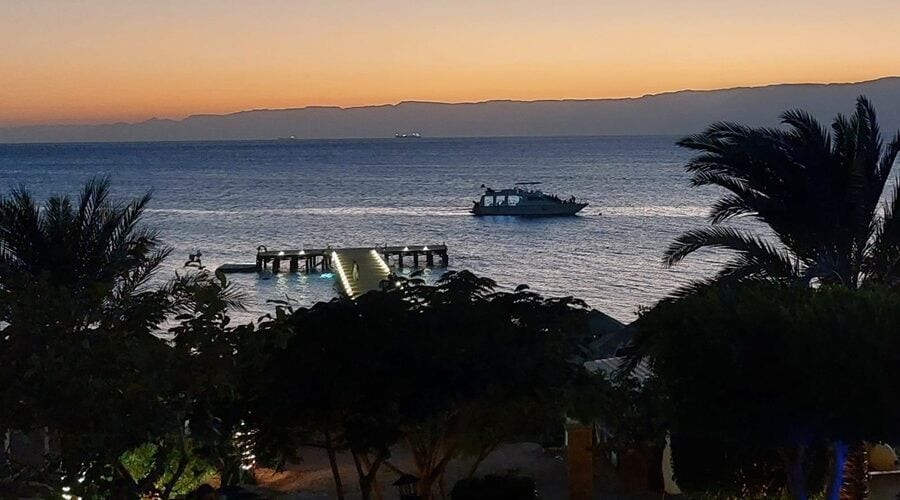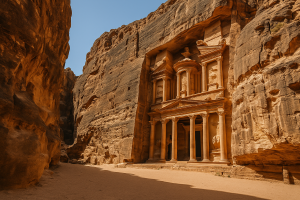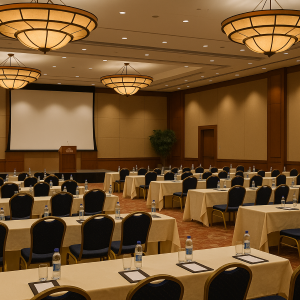Best Dive Center in Aqaba – Find the Right One for Your Red Sea Adventure
Aqaba is Jordan’s warm-water window on the Red Sea—short coastline, big rewards. Compared with Sinai/Egypt, you’ll find fewer boats, gentler logistics, and plenty of photogenic shore dives minutes from town. The headline trio—Cedar Pride, Japanese Garden, and Seven Sisters—sits alongside the unique Underwater Military Museum and easy house reefs in Tala Bay. Clean entries, broad visibility (often 15–40 m), and year-round diving make it a smart choice for training, relaxed holiday dives, mixed dive-and-snorkel families, and underwater photographers.
Diving Aqaba vs. Egypt (Sharm/Dahab): Pros & Cons
Aqaba Pros: easy shore entries, compact site cluster (less transfer time), calmer conditions, crowd-light, strong conservation messaging.
Aqaba Cons: fewer liveaboards, smaller overall site count.
Egypt Pros: huge variety and biomass, many budget levels and boats.
Egypt Cons: busier sites, longer boat days, more wind-exposed runs.
where to dive in aqaba
Most action sits along the protected South Beach corridor (Aqaba Marine Park/Reserve), with ~20+ named reefs and wrecks. Plan around two convenient zones:
- North South-Beach (Marine Science Station → First Bay): shallow gardens, training platforms, gentle drifts.
- South South-Beach / Tala Bay & Berenice/Black Rock: signature wrecks and shallow pinnacles—excellent for mixed dive/snorkel groups.
Many sites are shore-accessible via marked entries with parking nearby. Boats add comfort and reach for deeper sets and relaxed surface intervals.
Top dive sites in Aqaba
Comparison Table
| Site | Level | Depth | Entry (Shore/Boat) | Highlights | Typical Viz/Temp | Notes |
|---|---|---|---|---|---|---|
| Cedar Pride | Beg–Adv | 10–27 m | Both | 1985 wreck draped in soft corals; great wide-angle | 20–35 m; ~21–27 °C | Iconic photos; simple layout |
| Japanese Garden | Beg–Int | 5–20 m | Both | Coral heads, pagoda-like bommies; long, easy profiles | 15–30 m; ~21–27 °C | Perfect for learners & snorkelers |
| Seven Sisters / The Tank | Beg | 5–12 m | Shore/Both | Shallow pinnacles + M42 tank artificial reef | 15–30 m; ~21–27 °C | Superb for training & macro |
| Underwater Military Museum | Int | 18–28 m | Boat | 19 ex-military artifacts in formation | 15–30 m; ~21–27 °C | Unique artificial-reef park |
| Black Rock | Beg–Adv | 0–27 m+ | Shore | Lush reef; frequent turtles; snorkel-friendly | 20–30 m+; ~21–27 °C | In front of Berenice Beach Club |
| Tala Bay House Reefs (e.g., Yellowstone, Blue Coral, Kiwi) | Beg–Int | 5–20 m | Shore | Easy entries; sandy training lanes | 20–35 m; ~21–27 °C | Ideal for courses/refreshers |
| Rainbow Reef | Beg–Int | 6–18 m | Shore | Night-dive favorite; rich macro life | 15–30 m; ~21–27 °C | Often paired with nearby sites |
| First Bay (North/South) | Beg–Adv | 6–30 m | Both | Sloping reefs; occasional down-current edges | 20–30 m; ~21–27 °C | Common training/drift routes |
Use local briefings for daily conditions and any access updates.
Conditions & Seasons
- Water temperatures: ~21 °C (Feb–Mar) up to ~27 °C (Aug–Sep). That’s ~70–81 °F.
- Visibility: typically 15–40 m; many days top 30 m.
- Wind & currents: generally mild; exposed corners (e.g., First Bay edges) can have stronger/down-currents—follow guide instructions.
- Jellyfish: occasional summer blooms (often late Jun–Aug).
- Best for beginners: Apr–Jun and Oct–Nov (warmer water, calm seas).
- Photographers: year-round macro on shallow pinnacles; wide-angle on Cedar Pride, Military Museum, and Japanese Garden towers.
Monthly Snapshot
| Month | Temp °C | Viz (m) | Notes |
|---|---|---|---|
| Jan | 22 | 15–25 | Cool; 5–7 mm suit + hood helpful |
| Feb | 21 | 15–25 | Coolest spell; calm windows common |
| Mar | 21 | 15–25 | Good for training & long shore dives |
| Apr | 22 | 20–30 | Warming seas; coral gardens vivid |
| May | 23 | 20–30 | Peak shoulder season; light winds |
| Jun | 24 | 20–35 | Hot topside; occasional jellies |
| Jul | 26 | 20–35 | Great for long shallow profiles |
| Aug | 27 | 20–35 | Warmest water; busy beaches |
| Sep | 27 | 20–35 | Stable seas; photo favorite |
| Oct | 25 | 20–35 | Comfort & clarity sweet spot |
| Nov | 24 | 20–35 | Still warm; quieter crowds |
| Dec | 23 | 15–30 | Cool but often very clear |
Marine Life
Classic Red Sea cast: anthias clouds, butterflyfish, angelfish, parrotfish, lionfish, morays, octopus, and hawksbill/green turtles. Macro fans find nudibranchs, shrimps, and seahorses in seagrass lanes and on shallow pinnacles (e.g., Kiwi, Rainbow Reef). Wide-angle shooters target Cedar Pride, the Military Museum silhouettes, and Japanese Garden/Seven Sisters coral towers in 5–15 m.
Certification & Training
- Agencies: PADI and SSI throughout Aqaba.
- Courses: Open Water (3–4 days), Advanced (2–3 days), Rescue & Specialties (Nitrox, Wreck, Peak Performance Buoyancy, Night, Photo); pro tracks (IDC) at select centers.
- Age & medical: Junior programs start ~10–12+ (agency dependent). Complete the RSTC form; get physician clearance if indicated.
- Why Aqaba for training: sheltered house reefs, sandy bottoms, short logistics, and excellent visibility.
Gear & Logistics
- Rentals & gas: Full kit widely available; Nitrox offered at many centers (small surcharge).
- Shore vs. boat: Most signature sites are reachable from shore; boats add comfort, surface facilities, and easy access to the Military Museum’s deeper sets.
- Costs (approx.):
- 2-tank boat: 70–95 JOD
- Guided shore: 45–70 JOD
- Full gear: 20–30 JOD; Nitrox: +5–10 JOD
- Snorkel trip: 20–35 JOD
- Private beach/day-use: 10–25 JOD
Prices vary by season, boat size, inclusions, and group size.
- Transport & parking: South-Beach sites and beach clubs have parking close to marked entries.
- Tipping: Commonly 10–15% for guides/crew if service was strong.
BEST DIVE CENTER IN AQABA (criteria-based shortlist)
How this shortlist was created: instructor credentials & safety culture, shore/boat access, house-reef quality, course range, conservation practices (e.g., Green Fins), and consistently strong reviews.
Shortlist (alphabetical):
- Aqaba Adventure Divers (South Beach): PADI 5-Star; on-site rooms & pool; calm house reef. Best for learners and small groups.
- Arab Divers (South Beach): long-running center with training pool; shore & boat options. Best for courses + casual diving.
- Deep Blue Dive Center (Tala Bay): two-boat fleet; strong access to house reefs; conservation-forward. Best for photographers & variety seekers.
- Sindbad Dive Club (Berenice/Black Rock): waterfront base inside a beach club; easy family facilities. Best for families & mixed dive-and-beach days.
Mini Scorecard
| Center | Strengths | Best For | Contact/Neighborhood |
|---|---|---|---|
| Deep Blue Dive Center | 2 boats; shore + wreck access; conservation focus | Wrecks, photographers, varied levels | Tala Bay / South Beach |
| Arab Divers | Long history; pool; flexible shore/boat | Courses & casual divers | South Beach |
| Aqaba Adventure Divers | On-site lodging & pool; gentle house reef | Beginners & groups | South Beach |
| Sindbad Dive Club | Beach-club amenities; Black Rock reef | Families; snorkel + dive combo | Berenice / Black Rock |
Best dive center in Aqaba” – choose what fits you best
Each dive center in Aqaba brings its own strengths—whether it’s on-site lodging, family-friendly beach access, or dedicated boats and training facilities. The best dive center in Aqaba truly depends on what you value most: comfort, conservation focus, photography options, or small-group learning. All the listed centers maintain high safety standards, qualified instructors, and access to Aqaba’s top dive sites—so whichever you choose, you’ll enjoy a safe and memorable Red Sea experience.
SNORKELING IN AQABA
“snorkeling in aqaba” is easy and rewarding along South Beach. Pick shallow, protected reefs with lifeguards/day-use: Japanese Garden, Seven Sisters/The Tank, and Black Rock are family standouts. Rent quality masks/fins from beach clubs or dive centers; stay within roped areas, use a surface buoy when appropriate, avoid fire coral, and heed current lines and lifeguard instructions.
Itineraries (24h / 48h / 72h)
24 hours (respect no-fly times):
- AM: Warm-up shore dive at a Tala Bay house reef (or intro dive).
- PM: Cedar Pride second dive; sunset snorkel at Seven Sisters.
- Eve: Log dives, hydrate, early dinner.
48 hours:
- Day 1: 2-tank boat (e.g., Military Museum + reef). Optional night dive at Rainbow Reef.
- Day 2: Japanese Garden + The Tank as relaxed long shallows; beach time at Berenice.
72 hours:
- Day 1: House-reef warm-up + Cedar Pride.
- Day 2: 2-tank boat (mix of wreck/reef).
- Day 3: Black Rock macro hunt; finish by early afternoon to start no-fly interval.
Safety & Regulations
- Marine Reserve etiquette: no touching/standing on coral; no collecting; excellent buoyancy; follow zoning/markers.
- Conservation: consider Green-Fins-aligned operators; secure gear, avoid gloves/pointy sticks.
- Insurance: carry DAN (or equivalent) dive insurance.
- Emergency: national emergency 911; hyperbaric chamber available in Aqaba. Ask your center about their protocol.
- Flying after diving (general guidance): ~12 h after a single no-deco dive; ~18 h after multiple/multi-day dives; longer if decompression. Always follow your computer and agency guidance.
Beginner Checklist
- Booking/email confirmation or certification card
- Medical questionnaire (and doctor’s clearance if needed)
- Reef-safe sunscreen & snug mask
- Rash guard/hooded vest in winter months
- Water/hat/snacks
- Cash for tips/fees
- Planned no-fly buffer time
Local Tips
- Aqaba’s best color is often 5–15 m—don’t rush deep.
- Feb–Mar: bring a hooded vest or 5–7 mm; mid-summer a shorty is fine.
- Night-dive Rainbow Reef for macro.
- Summer: occasional jellies—wear a skinsuit if sensitive.
- Don’t kick up sand—seahorses and critters hide in seagrass lanes.
- Ask centers about beach-club combos for non-diving family members.
Costs & Budget (approx.)
- Open Water course: 290–380 JOD
- Advanced course: 260–330 JOD
- 2-tank boat: 70–95 JOD
- Guided shore: 45–70 JOD
- Full gear rental: 20–30 JOD
- Nitrox add-on: +5–10 JOD
- Snorkel trip: 20–35 JOD
- Private beach/day-use: 10–25 JOD
Notes: prices vary by season, inclusions (meals, transfers, photos), and group size. Always confirm your exact package.
Access & Practicals
- Airports: AQJ – King Hussein International (Aqaba) or AMM – Queen Alia (Amman) then ~4 h road transfer.
- Borders: Overland from Israel (Wadi Araba) or Saudi (Durra). Check current requirements.
- Visas: Review VisitJordan/Jordan Pass eligibility and fees (subject to change).
- Where to stay: South Beach/Tala Bay for step-to-reef convenience; city center for dining/shopping with a short drive to sites.
- Etiquette: Swimwear is fine at beaches/clubs; dress modestly in town; hydrate and follow lifeguard/park rules.
FAQ
1) What are the easiest “where to dive in aqaba” options for first-timers?
Japanese Garden, Seven Sisters/The Tank, and Tala Bay house reefs—shallow, calm, and close to shore.
2) Which is the “best dive center in aqaba”?
Several are excellent; Deep Blue is our overall pick for balanced boats + shore, broad courses, and conservation focus. Always compare schedules, language support, and vibe.
3) What visibility and temperatures should I expect?
Typically 15–40 m visibility; water ~21 °C in winter to ~27 °C in late summer.
4) Is Aqaba good for beginners?
Yes—gentle shore entries, sandy bottoms, and many 5–12 m gardens make learning comfortable.
5) Do I need a boat to see the best sites?
Not always. Cedar Pride, Japanese Garden, Seven Sisters, and Black Rock are shore-accessible; boats add comfort and reach to deeper sets.
6) Can I do snorkeling in aqaba without a guide?
Yes at lifeguarded beaches and marked entries. Stay within roped areas, use a surface marker when needed, and avoid currents.
7) Any jellyfish season?
Occasional summer blooms (late Jun–Aug). A rash guard or skinsuit helps.
8) Where is the nearest chamber and who do I call?
Hyperbaric care is available in Aqaba; dial 911 and notify your dive center.
9) When is the absolute best time to go?
Oct–Nov for warm water and clarity; Apr–Jun is a strong second.
10) Are there conservation rules?
Yes—Aqaba Marine Reserve rules apply: no touching/collecting; maintain buoyancy; follow guide instructions.
11) Is Nitrox available?
Yes at multiple centers for a small surcharge.
12) Are there kid-friendly options?
Snorkeling is ideal; junior dive programs generally start at ~10–12+ depending on agency.



